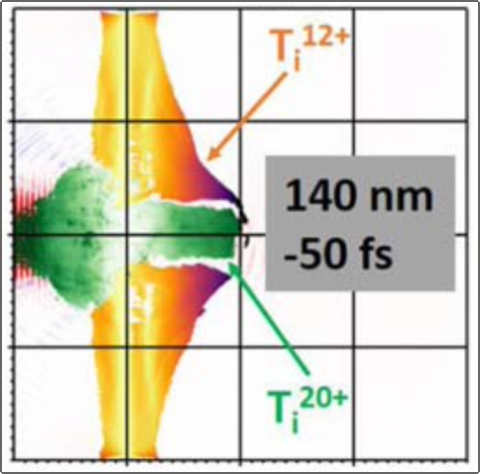J. Li, P. Forestier-Colleoni, M. Bailly-Grandvaux, C. McGuffey, A. Arefiev, S. S. Bulanov, J. Peebles, C. Krauland, A. E. Hussein, T. Batson, J. C. Fernandez, R. P. Johnson, G. Petrov, and F. Beg, "Laser-driven acceleration of quasi-monoenergetic, near-collimated titanium ions via a transparency-enhanced acceleration scheme", New J. Phys. 21 103005 (2019).
Laser-driven ion acceleration has been an active research area in the past two decades with the prospects of designing novel and compact ion accelerators. Many potential applications in science and industry require high-quality, energetic ion beams with low divergence and narrow energy spread. Intense laser ion acceleration research strives to meet these challenges and may provide high charge state beams, with some successes for carbon and lighter ions. Here we demonstrate the generation of well collimated, quasi-monoenergetic titanium ions with energies ~145 and 180 MeV in experiments using the high-contrast (<10−9) and high-intensity (6 x 1020 W cm-2) Trident laser and ultra-thin (~100 nm) titanium foil targets. Numerical simulations show that the foils become transparent to the laser pulses, undergoing relativistically induced transparency (RIT), resulting in a two-stage acceleration process which lasts until ~2 ps after the onset of RIT. Such long acceleration time in the self-generated electric fields in the expanding plasma enables the formation of the quasi-monoenergetic peaks. This work contributes to the better understanding of the acceleration of heavier ions in the RIT regime, towards the development of next generation laser-based ion accelerators for various applications.
